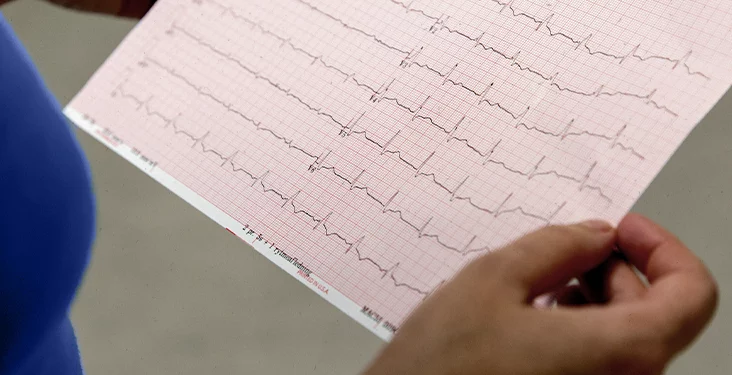The heart, a symbol of life and vitality, operates in rhythms known and unknown to the individual. Within this rhythm lies the key to understanding one’s heart health. This is manifested through an Electrocardiogram (EKG).
However, when an EKG reads as ‘borderline,’ it presents a puzzle wrapped in the enigma of heart health. This state of liminality beckons a deeper exploration into the heart’s whispers and roars.
Unraveling the link between a borderline EKG and heart health unveils a narrative not just of medical significance. It is also about human resilience and the quest for equilibrium within.
Table of Contents
Understanding the Meaning of a Borderline EKG
A borderline EKG can often raise eyebrows among healthcare professionals and patients alike. EKG machines are the tools at the forefront of this diagnostic process. This plays a pivotal role in capturing the heart’s electrical activity.
When these machines indicate a reading that is neither normal nor indicative of a clear pathology, it is termed ‘borderline.’ This ambiguous result calls for a closer look at the following:
- one’s lifestyle
- underlying conditions
- possibility of retaking the test
It underscores the importance of precision in EKG machines. It also underscores the nuanced understanding required to interpret their readings.
Exploring the Causes of Borderline EKG Readings
Borderline EKG readings may originate from a spectrum of causes. This ranges from benign anomalies to early signs of CKM heart disease. Variations in the heart’s structure can contribute to these readings. This includes electrolyte imbalances and transient factors like stress or fatigue.
Equally, a borderline EKG could hint at the onset of CKM heart disease. This is necessitating further evaluation to confirm or rule out this condition. This complexity underscores the critical importance of context and comprehensive analysis. This happens in diagnosing heart health issues.
How a Borderline EKG Affects Heart Health
A borderline EKG has implications for heart health that cannot be overlooked. It serves as an initial indicator that something within the heart’s electrical system may not be functioning.
It triggers a cascade of further assessments and investigations. This is not a definitive diagnosis of heart disease. This state emphasizes the need for vigilance and lifestyle adjustments. This aims to mitigate any potential risks.
Navigating the ambiguity of a borderline EKG result requires a careful, informed approach. This is to safeguard one’s cardiovascular well-being.
Navigating Heart Health After a Borderline EKG Discovery
It becomes critical to pursue further diagnostic paths to clarify one’s heart health status. This is following the discovery of a borderline EKG. Among these paths are common tests for heart failure. This includes echocardiograms, stress tests, and blood tests measuring levels of certain enzymes.
These tests offer a deeper insight into the heart’s functioning. It can pinpoint issues that a borderline EKG might hint at. Taking this step is crucial in crafting a targeted health strategy. This is to address or preempt heart-related concerns.
All About Borderline EKG and Heart Health
In conclusion, a borderline EKG symbolizes a juncture in heart health that demands attention and action. It’s a reminder of the complexity of the heart’s electrical system and the importance of thorough evaluation.
Addressing it with diligence leads to a deeper understanding of one’s cardiovascular well-being and can guide the way toward maintaining or improving heart health. In the realm of heart care, every signal matters, and a borderline EKG is no exception.
Did you find this article helpful? Check out the rest of our blog for more!


 Home
Home








